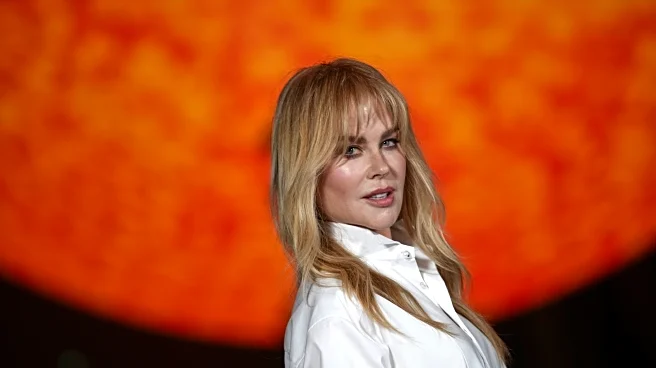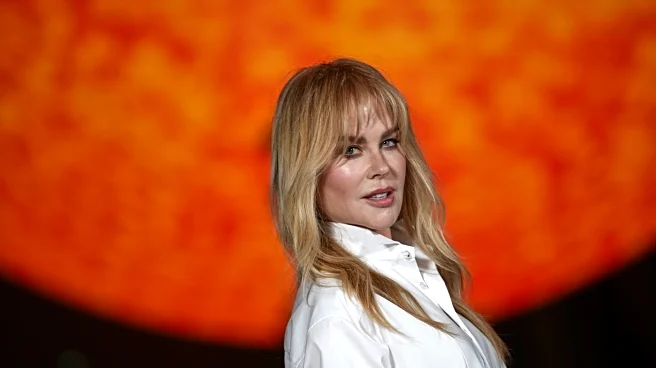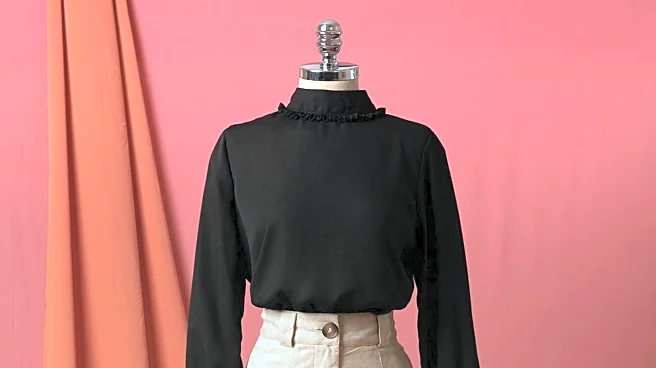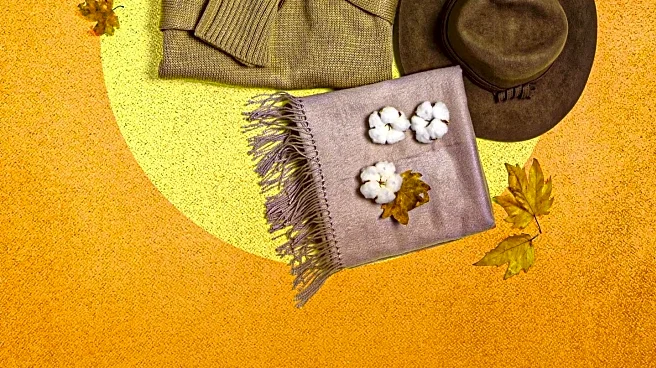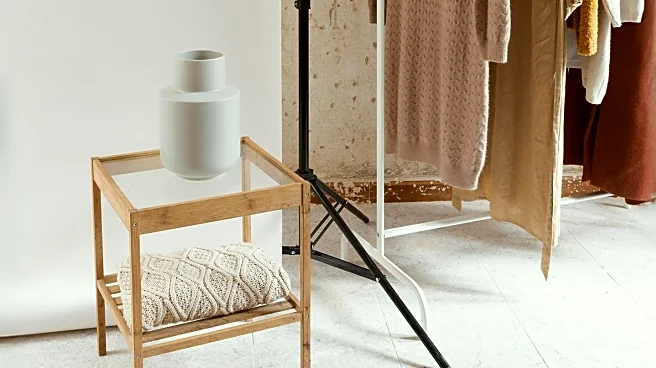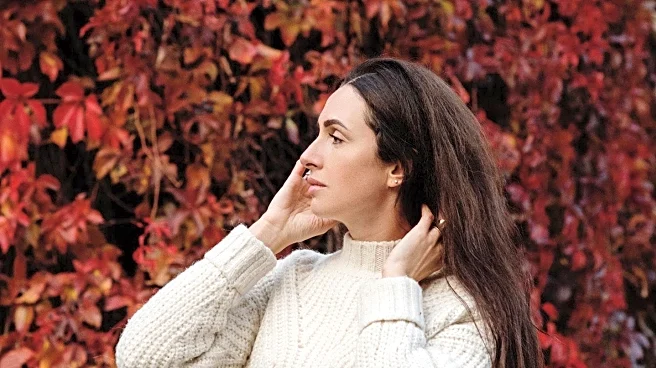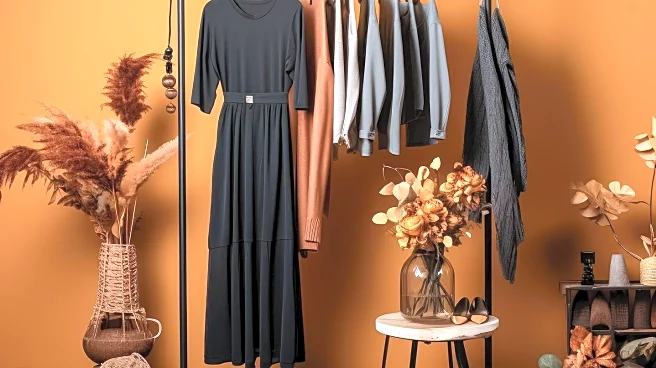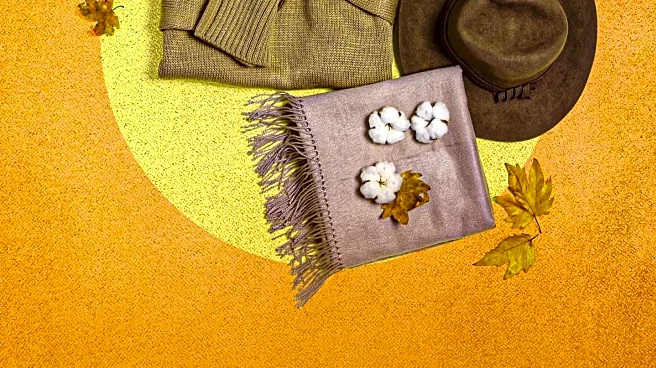What's Happening?
Calvin Klein, along with other fashion brands, is embracing the trend of derbies and brogues for the fall season. These styles, traditionally seen in menswear, are being reimagined for women's fashion. The recent runway shows featured these shoes paired with slinky dresses and menswear-inspired separates, highlighting a fresh take on classic footwear. Designers like Victoria Beckham and Michael Kors have incorporated these styles into their collections, showcasing them with pleated trousers and treaded soles for a tougher look. The trend emphasizes the versatility of derbies and brogues, allowing them to be styled in various ways, from classic tailoring to elegant skirts and dresses.
Why It's Important?
The adoption of derbies and brogues in women's fashion signifies a shift towards more gender-neutral styles, reflecting broader societal changes in fashion norms. This trend could influence the footwear industry by increasing demand for these traditionally masculine styles in women's collections. It also highlights the fashion industry's ongoing exploration of blending traditional and modern elements, potentially impacting retail strategies and consumer preferences. Brands like Calvin Klein are at the forefront of this movement, which could lead to increased visibility and sales as consumers seek versatile and stylish options for their wardrobes.
What's Next?
As the trend gains momentum, fashion brands may continue to innovate with derbies and brogues, experimenting with materials, colors, and designs to appeal to a wider audience. Retailers might adjust their inventory to accommodate the growing interest in these styles, potentially leading to collaborations with designers to create exclusive collections. The fashion industry could see a rise in marketing campaigns that emphasize the versatility and timeless appeal of these shoes, targeting consumers looking for both style and comfort.
Beyond the Headlines
The resurgence of derbies and brogues in women's fashion could have cultural implications, challenging traditional gender norms and promoting inclusivity in fashion. This trend may encourage consumers to explore personal style beyond conventional boundaries, fostering a more diverse and expressive fashion landscape. Additionally, it could inspire other industries to reconsider gender-specific products, leading to broader societal shifts in how gender is perceived and represented.

